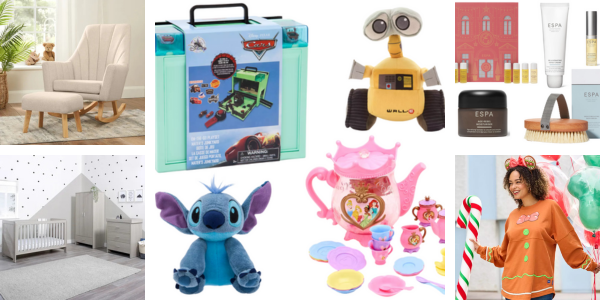

Choice. Freewill. Two very important concepts within our world. Yet, some of the most forgotten concepts when it comes to children.
Why is something so simple and critical as choice so often an after thought? Why do so many parents end up overriding their children’s choices? Some may argue it is a side affect of modern society. Other’s that it saves time and our busy adult lives simply do not have time for the pondering of toddlers and children…. In my opinion this couldn’t be further from the truth. In our house we encourage choice. Today I will help you learn how you can incorporate it into your own household, helping your children to flourish into self-confident individuals.
What Is Choice?
Before we get into the why, let’s cover the what. When it comes to parenting there are certain aspects of our children’s lives that we have to be responsible for. But many are surprised to learn there are lots of choices that we can let them make for themselves.
Since Aria was born she has been making her own choices. As a newborn she chose when she fed, slept and what toys she wanted to play with. Time passed by and she grew into a adventurous toddler. Now she chooses her clothes, what she plays with, how she plays, whether she wants to share with her sister, how much food she eats, whether she shows affection or not and even if she requires medication.
Obviously there are some restrictions when it comes to things like medication. If it is prescribed and essential for her health then unfortunately it’s a non-negotiable. But when it comes to pain relief for teething etc then Aria makes the choice. She has become rather adept at telling us when she needs calpol and will quickly shake her head if she doesn’t think she needs it. Some may see it as too much choice for someone so young, but it works for her!
Why Give Choice?
Choice is crucial to our wellbeing as humans. Without it we tend to feel controlled, frustrated and depressed. The same goes for your children. They may not be capable of making major life decisions or comprehending right from wrong, but they can make choices in their own way if given the opportunity.
Not only does the opportunity of choice help to improve self-confidence, but some researchers even argue it is crucial for a child’s development.
In previous studies it was found that if toddlers did not develop autonomy and given the opportunity of choice then they were more likely to remain dependent on parents for an extended period of time and were more likely to be influenced by their peers (Erikson, 1950; Gartell, 1995).
The effect of restricted choice unsurprisingly also affects confidence and learning in older children. With those restricted experiencing increased self-doubt, failing to take risks and as a result missing out on real learning opportunities (Gartell, 1995).
Lastly, giving choice helps reinforce the understanding of consequences. If a child is making independent choice then they come to understand that the result of these choices are nobody else’s responsibility but their own (Grossman, Undated). A very important life lesson. As adults we tend neutralise unfavourable reactions in our children, but by helping them understand consequences and how to process emotions we can greatly aid their overall wellbeing.
So it is clear that giving our children choice is a positive approach to parenting. One that is crucial for their development as well rounded human beings. But how do you incorporate it into your daily life without chaos descending?
How To Incorporate Choice
Now we have discussed what choices you can give your children and why it is so important, we can get to the how. How do you give choice without a riot or it being the next century before you get an answer? In situations where Aria may become overwhelmed by too much choice, we like to give her secondary choices.
Some situations that are particularly tricky to navigate, such as what she would like to eat for dinner, have the potential for total disaster. However, by limiting the choice to several options, you not only save yourself a tonne of time but you also allow your child the experience of choice. Just within a specific range of options.
A similar approach can be taken to clothes with pre-approved outfits laid out for the child to then choose from. Again, this can be done with all manner of things, from toys to days out. It’s an easy way of opperating that serves both the parent and the child.
In our house there are some choices we leave completely up to the girls, such as food control. We feel it is vital for the girls to learn how to self-regulate their food intake. This takes form in feeding on demand for Ryver and allowing Aria to tell us when she is hungry and when she has finished her dinner. Some may argue that children should be made to finish whatever is cooked for them, but in our opinion this does nothing for their relationship with food. By self-regulating they learn when they are full and how much they need to eat to feel comfortable. Thus avoiding over eating and giving them the ability to adapt to their unique appetites.
From previous research it’s clear to see that choice is critical to ensuring our children’s wellbeing. Incorporating and offering choice can be a simple addition to your parenting method, whatever that may be and choice doesn’t have to mean a battle or the ensuing of chaos.
Each child will have a different response to choice. Some may love it. Some may take a while to get used to it. But there are multiple ways we, as parents, can offer choice to suit our child’s individual needs. With more exposure and practice, your child will become more adept at making their own choices, their self-confidence soaring along with it!
How do you offer your child choice? Is there anything you would recommend for those anxious about giving too much choice? Let us know in the comments below!
WRITTEN BY AMY KINGSTON FOR HER BLOG, GROWING UP WITH NATURE.
YOU CAN FOLLOW HER ON FACEBOOK, TWITTER AND INSTAGRAM!



.png)






.jpg)




